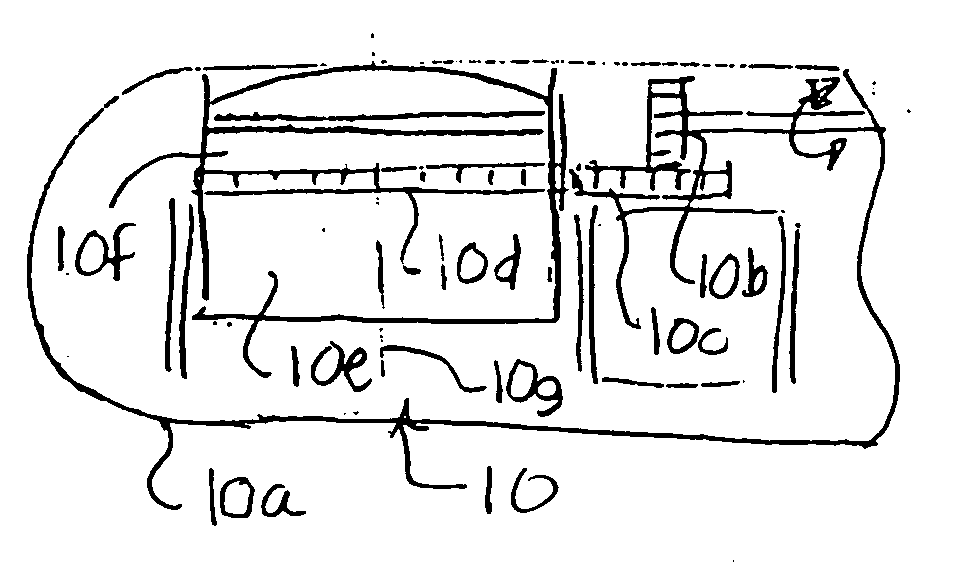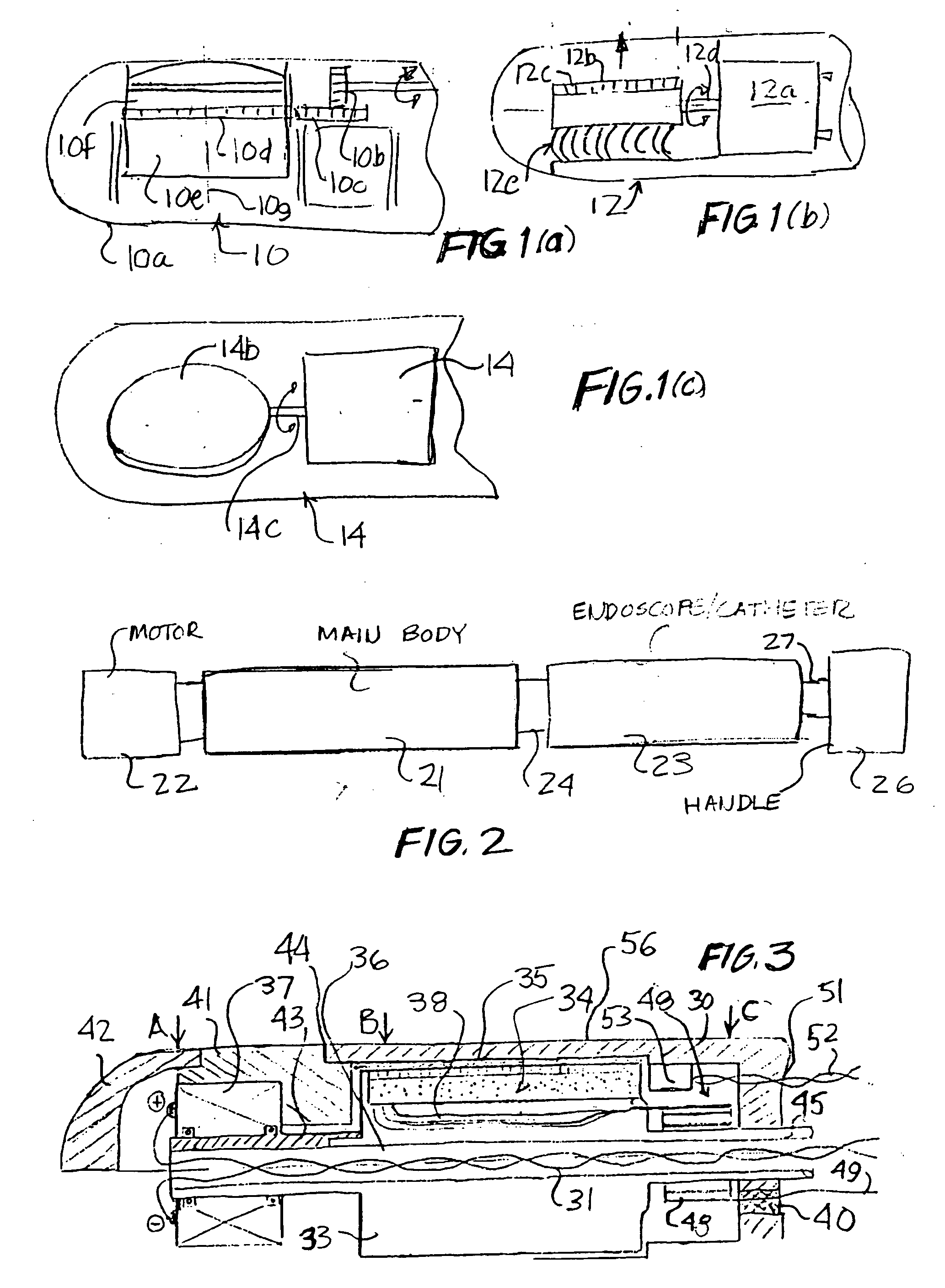Motorized ultrasonic scanhead
a scanhead and motorized technology, applied in the direction of catheters, sensors, reradiation, etc., can solve the problems of patient discomfort, present risks during manipulation, and significant discomfort to the patient, so as to minimize any electrical discharge associated, the effect of expanding the angle of vision and reducing the risk of manipulation
- Summary
- Abstract
- Description
- Claims
- Application Information
AI Technical Summary
Benefits of technology
Problems solved by technology
Method used
Image
Examples
Embodiment Construction
[0035] Before considering the preferred embodiments of the present invention, reference is made to FIGS. 1(a), 1(b) and 1(c), which show various approaches or modes for providing rotational movement of a transducer in an ultrasonic scanhead, all of which use either a remotely located motor or a motor directly coupled to the transducer to be rotated.
[0036] Referring to FIG. 1(a), there is shown a schematic cross-sectional first prior art probe 10 including a probe body 10a containing a motor-driven drive gear 10b that drives an intermediate gear 10c that, in turn, drives ring gear 10d mounted on a rotatable transducer unit 10e so as to extend around the circumference thereof. Transducer unit 10e is of conventional construction including a transducer array 10f and is mounted such that the longitudinal axis 10g thereof extends orthogonal to the longitudinal axis of the probe 10. The drive mechanism including gears 10b, 10c and 10d converts rotation of drive gear 10b into rotation of t...
PUM
 Login to View More
Login to View More Abstract
Description
Claims
Application Information
 Login to View More
Login to View More - R&D
- Intellectual Property
- Life Sciences
- Materials
- Tech Scout
- Unparalleled Data Quality
- Higher Quality Content
- 60% Fewer Hallucinations
Browse by: Latest US Patents, China's latest patents, Technical Efficacy Thesaurus, Application Domain, Technology Topic, Popular Technical Reports.
© 2025 PatSnap. All rights reserved.Legal|Privacy policy|Modern Slavery Act Transparency Statement|Sitemap|About US| Contact US: help@patsnap.com



